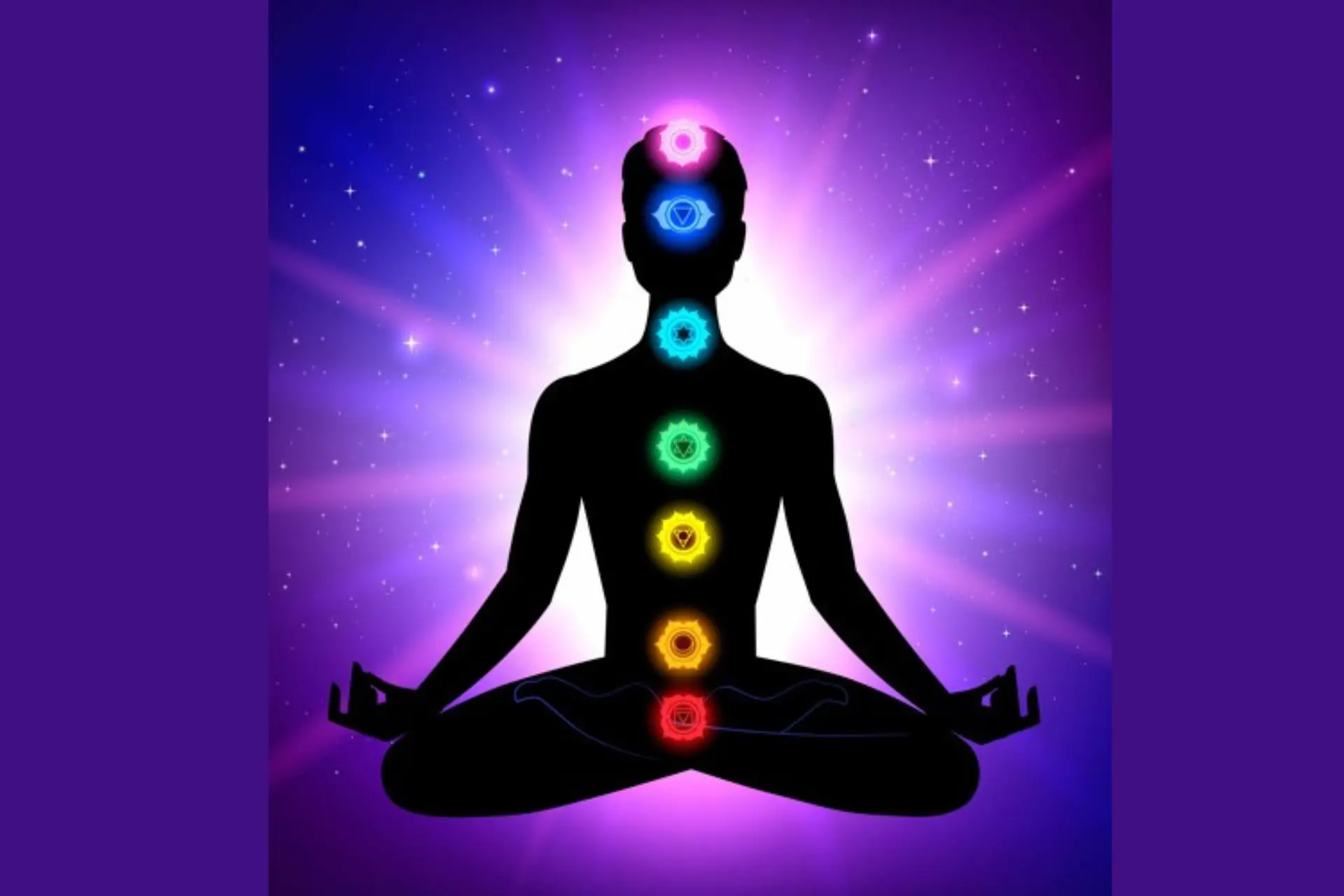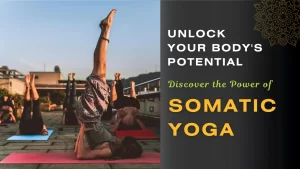Chakras in Yoga are the energy centers located along the pathway of sushumna, an energy channel which flows through the center of the spinal cord. Chakras are associated with nerve plexuses and endocrine glands in the body. Chakras are used in various healing techniques and also used for concentration in various types of meditations.
In Yoga many asanas have a beneficial effects on one or more of these glands or chakras (nerve plexuses). Ex. During bridge pose pressure comes on thyroid gland in the throat region which is associated with vishudhi chakra, while practicing this bridge pose, the thyroid get good massage and its functioning is greatly improved. If we concentrate to this chakras in Yoga while performing the asana, the benefits will be increased.
The pranic energy that governs all the functions in the body uses specific channels to move. These channels are known as naadis. The pranic network is fuelled by chakras or energy centers. This receives the cosmic prana and act as transformers, so that it can be used by various organs and parts of the body.
When these energy centers are out of harmony, the vital force is unable to circulate freely, leading to distress, diseases and lack of mind-body activity. Good health requires free flow of prana in the body and proper balance between the chakras.
Table of Contents
7 Major Chakras in Yoga
Mooladhar Chakra (Root Chakra)

It is situated at the perineum in the male and at the cervix in the female body. It is related to instinct, security, survival and basic human potentiality.
It is symbolized by deep red lotus with four petals. In the center is yellow square, and in the center of square is a red triangle. For concentration on mooladhara chakra, visualize the red inverted triangle or the yellow square.
The bija mantra is ‘Lam’
Swadhisthana Chakra (Sacral Chakra)

It is situated exactly two fingers width above the mooladhar chakra, in the spine. This chakra is symbolized by a crimson lotus with six petals. The center is a white crescent moon. This chakra is related to base emotions, sexuality and creativity. This chakra corresponds to the testicles or the sex hormones involved in the reproductive cycle.
A balance swadhisthana chakra helps establish a creative and expressive mentality.
The bija mantra is ‘Vam’
Manipura chakra (Solar Plexus)

It is situated in the spine behind the naval. It is symbolized as a bright yellow lotus with ten petals within the lotus is fiery red triangle. This chakra is related to higher emotions, energy, assimilation and digestion. It represents vitality, dynamism, ego and intellect. When balanced, it is the source of physical well-being but, when imbalanced it leads to range of illnesses, weak character, and poor will-power and develops the, me mentality.
The bija mantra is ‘Ram’
Anahat chakra (Heart Chakra)

It is situated in the spine behind the sternum level with the heart. It is symbolized by a blue lotus with twelve petals. In the center of the lotus is a hexagon.
This chakra is related to the higher emotions, compassion, love, equilibrium and well-being. When anahat chakra is activated the feeling of the universal fellowship begin to develop and all beings are accepted and loved.
The bija mantra is ‘Yam’
Vishuddhi chakra (Throat Chakra)

It is situated at the back of the neck. It is symbolized by a violet lotus with sixteen petals. In the center of a lotus is a white circle.
Vishuddhi chakra is related to communication and growth, expression. When this chakra is active, a person became a good speaker and when blocked the person feels shifted and is less truthful. When this chakra is balanced dualities of life are accepted allowing one to flow with the life and let things happen as they will.
The bija mantra is ‘Ham’
Ajna Chakra (Third Eye)

It is situated in the mid brain, behind the eyebrow center. This chakra is also known as Third eye. This chakra is symbolized by Silver lotus with two petals. Ajna chakra corresponds to the pineal gland. This chakra is commanding or the monitoring center.
Ajna chakra is an important focal point for practicing meditation and visualization. Stimulating ajna chakra develops intelligence, memory and concentration.
The bija mantra is ‘Aum’
Sahasrara Chakra (Crown Chakra)

It is situated at the crown of the head. It is symbolized as a shining lotus of a thousand petals. It is a chakra of consciousness, the master chakra that controls all the other chakras. It is a center of pure thoughts and saintly intelligence. It is a doorway through which one is connected with the prana
The bija mantra is ‘Aah’
Try this Chakra Balancing Meditation Technique Visit Here
Conclusion
In conclusion, delving into the intricate web of the seven chakras in yoga reveals not only a profound understanding of the human body’s energetic system but also offers a pathway to holistic well-being. Each chakra, from the root to the crown, represents a unique facet of our being, influencing physical, emotional, and spiritual realms.
Through dedicated practice, individuals can awaken, balance, and harmonize these energy centers, fostering a deeper connection with oneself and the universe.
By nurturing the seven chakras, one can unlock a cascade of transformative benefits, including enhanced vitality, emotional resilience, and spiritual awakening. Embracing the journey of exploring and aligning the seven chakras in yoga not only enriches our yoga practice but also empowers us to lead more fulfilling and harmonious lives, both on and off the mat.
Try this Chakra Balancing Meditation Technique Visit Here




